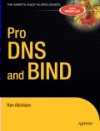
HOWTO support http://example.com
This HOWTO configures a DNS server to allow URL's of the form http://www.example.com and http://example.com - both URL's will get to the same web server. Seems it's the cool thing to do these days. Though just to really tick you off - if you type example.com into a decent browser it will automatically try www.example.com for you ('cos it thinks you forgot or are stupid). So you don't actually need to do anything - 'cept use a good browser.
Beware: You will also have to change your web server for this to work (change defined below for Apache using Virtual hosts).
; zone file fragment for example.com
....
; SOA NS MX and other stuff
; define an IP that will resolve example.com
IN A 192.168.0.3
; you could also write the above line as
; example.com. IN A 192.168.0.3
www IN CNAME example.com. ; dot essential
; aliases www.example.com to example.com
; OR define another A record for www using same host
; this is the least number of changes and saves a CNAME
www IN A 192.168.0.3
The above example shows both the use of CNAME and A RRs to achieve the same result (one or the other is required - not both). Which to use? It does not matter but, since you asked and since we consider unnecessary CNAME RRs to be evil, we would opt for the A RR approach. Well you asked.
The above will also work for any other service, such as ftp, as long as different ports are in use, for example, ftp://example.com will work if your FTP server was appropriately configured and on the same host.
Apache change
Assuming you are using virtual hosts on an Apache server you will have a definition in your httpd.conf file something like this:
<VirtualHost 10.10.0.23>
ServerAdmin webmaster@example.com
DocumentRoot /path/to/web/root
ServerName www.example.com
ErrorLog logs/error_log
CustomLog logs/access_log common
</VirtualHost>
you need add a second definition with ServerName modified to reflect your change as follows:
<VirtualHost 10.10.0.23>
ServerAdmin webmaster@example.com
DocumentRoot /path/to/web/root
ServerName example.com
# if logging per host needs separate files
ErrorLog logs/another_error.log
CustomLog logs/another_access.log common
</VirtualHost>
An alternate method is to use a single <VirtualHost> definition using the ServerAlias directive as shown below:
<VirtualHost 10.10.0.23>
ServerAdmin webmaster@example.com
DocumentRoot /path/to/web/root
ServerName www.example.com
ServerAlias example.com
# if logging per host - use a single file
ErrorLog logs/error.log
CustomLog logs/access.log common
</VirtualHost>
Problems, comments, suggestions, corrections (including broken links) or something to add? Please take the time from a busy life to 'mail us' (at top of screen), the webmaster (below) or info-support at zytrax. You will have a warm inner glow for the rest of the day.













